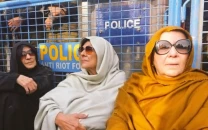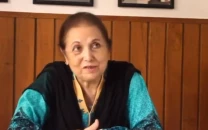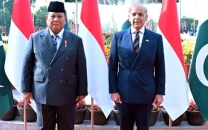India’s still Indira
For many, Indira Days were when the Good Old Days, days historians painted in sepia tones, came to a screeching halt.

The writer is a lawyer based in Lahore and studied law at Lincoln’s Inn and the London School of Economics. He tweets @AsadRahim
Answered Mrs Gandhi, “By performing insurrections, assemblies, scenes of arrest. My dolls were almost never babies to be nursed, but men and women who attacked barracks and ended up in prison.”

There was a reason Indira’s Congress boss — with the unimprovable name of D K Barooah — would yell “India is Indira, Indira is India”, not least because a lot of the time, it seemed true. Just as true as when Richard Nixon, with typical darkness, fumed over how he “really slobbered over that old witch”.
This was, no doubt, a woman that aroused strong emotion.
How couldn’t she? Today’s Indian press agrees on but one thing — that the Iron Lady be described in Very Big Words: a titan to her fans, an ogre to her foes. The reality is less romantic. Ms Gandhi’s hold over India was the proverbial bear hug: big, bloody, and, for many, still unbroken.
And as India’s elections loom — and the nightmare of a PM Modi grows realer by the day — it’s a sad indictment of the Gandhis, the Congis, and the system they spoiled. It could have all been so different.
It’s unimaginable, in this dynastic day and age, to think Indira’s rise wasn’t guaranteed, but the times were less cynical back then. Before Sanjay went rogue, it was the Iron Lady that was the dissolute son, dropping out of Oxford and marrying for love. “No one wanted that marriage,” Mrs Gandhi would later say. “No one. Even Mahatma Gandhi wasn’t happy about it.” And when her father died, the PM’s mantle moved not to her, but to tough, tiny Lal Bahadur Shastri instead. It would take Shastri’s death, in less than two years later, for India to lurch towards Indira… and dynasts evermore. Around the time she took over, Congress’s old uncles made fun of Nehru’s little girl; goongi gurya, they laughed. By the time she left, they were calling her the goddess Durga (the Invincible).
But while Mrs Gandhi proved hard to break, she broke her father’s India with flair. For many, the Indira Days were when the Good Old Days, the days historians painted in sepia tones, came to a screeching halt. The Mahatma days of men in white, daring to dream of a proud and progressive India, were over.
But the Indira Days, bleak, brittle and martial, had just begun. Victory in ’71 put Mrs Gandhi beyond reproach, Emergency in ’75 put her beyond redemption. Thousands of protestors, including gents with names like Kripalani, Desai, Vajpayee and Advani, were hauled off to jail. Provincial governments were sacked, elections postponed, and the press kicked around.
And then there was Sanjay, with his sideburns and sports cars and steel contracts. Sanjay took the all-too-familiar route of today’s Mughal princelings: leading the party’s youth wing, before running Delhi with his bachpan ke dost. Mrs Gandhi had a mother’s empathy for her son, “He is so much like I was at that age — rough edges and all — that my heart aches for the suffering he may have to bear.” Sanjay ended up causing a lot more suffering with those rough edges, force-sterilising Indians up and down the country.
It was democracy lost: the republic saw its first emergency, and its first personality cult. When Mrs Gandhi returned, she would lose her son to a stunt plane, and herself to her Sikh bodyguards’ bullets. Delhi would strike back, and over 8,000 Sikhs were murdered in the aftermath. “When a big tree falls,” explained Rajiv, “the earth shakes”.
Thirty years later, it’s still Indira’s India, swept by reaction and resentment, refusing to escape the woman it buried in the blood and dust of ‘84.
Today, the useless Rahul Gandhi accuses Modi of massacring Muslims in Gujarat. The BJP jeers back that Mr Gandhi couldn’t even bring himself to apologise for ’84. So Mr Gandhi checks himself… and apologises.
Rahul then compares Modi to Hitler, to be kicked in the teeth again by the BJP boys; Arun Jaitley smirking that Indira’s Emergency looked and felt a whole lot like the Third Reich. When it comes to autocracy — or murdering minorities — the ghost of Rahul’s grandmother is managing the impossible: ceding the moral ground to Modi.
For someone fond of combat sports, Modi has held off from going after Indira, even as Rahul reels from nosebleed to nosebleed. Modi’s no fan; he’s long equated Emergency with India’s darkest days. But Modi owes a lot to the Iron Lady, as more than one observer has pointed out: the comprehensive campaign, the emasculating of the old guard, the flat-footed leadership style.
And of course, personality over party.
As this massive republic gears up for a multi-round show, it’s a sad day to see the India of Gandhi and Nehru become the India of Gandhi III and NaMo. That the fate of a billion people be put in the hands of an unwilling dynast on one side, and a certified monster on the other, is hard to comprehend.
But the real victim of this tragedy is, as ever, the Indian Muslim. As the Muslim voter scrambles to keep the ‘saffrons’ out and the ‘seculars’ in, comparing the tried-and-failed Congress to the tried-and-failing Samajwadi Party — it’s sad to see India’s main minority become just another trade union.
For in the world’s largest election, in the world’s largest democracy, collective terror of Modi it would seem, is all that matters.
Published in The Express Tribune, March 18th, 2014.
Like Opinion & Editorial on Facebook, follow @ETOpEd on Twitter to receive all updates on all our daily pieces.



















COMMENTS
Comments are moderated and generally will be posted if they are on-topic and not abusive.
For more information, please see our Comments FAQ